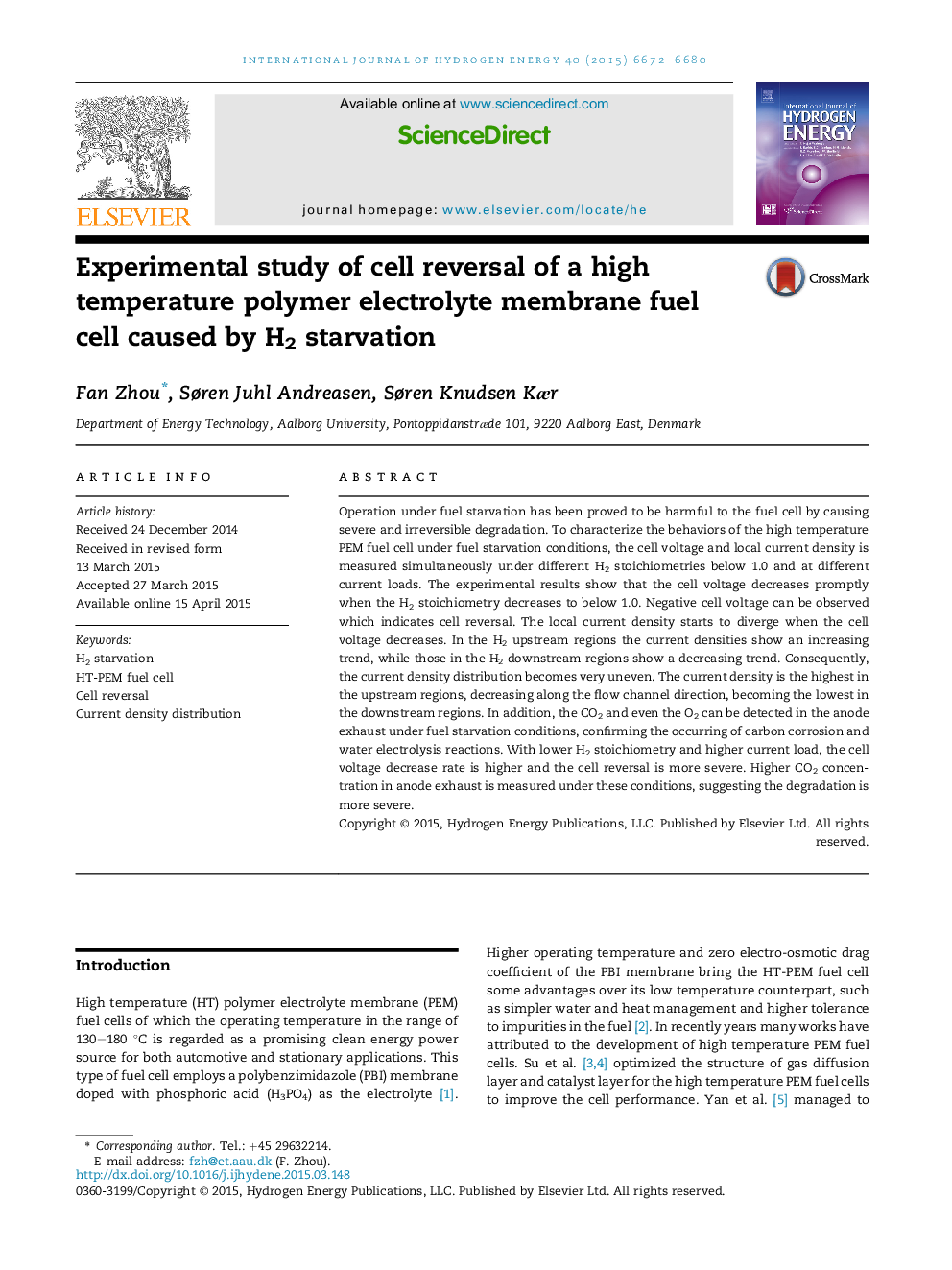| Article ID | Journal | Published Year | Pages | File Type |
|---|---|---|---|---|
| 1271463 | International Journal of Hydrogen Energy | 2015 | 9 Pages |
•Reversed cell voltage observed under H2 starvation conditions.•Lower H2 stoichiometry and higher current brought about more severe cell reversal.•The current density distribution was quite uneven under H2 starvation conditions.•CO2 and O2 were detected under H2 starvation conditions.•Lower H2 stoichiometry and higher current brought about higher CO2 concentration.
Operation under fuel starvation has been proved to be harmful to the fuel cell by causing severe and irreversible degradation. To characterize the behaviors of the high temperature PEM fuel cell under fuel starvation conditions, the cell voltage and local current density is measured simultaneously under different H2 stoichiometries below 1.0 and at different current loads. The experimental results show that the cell voltage decreases promptly when the H2 stoichiometry decreases to below 1.0. Negative cell voltage can be observed which indicates cell reversal. The local current density starts to diverge when the cell voltage decreases. In the H2 upstream regions the current densities show an increasing trend, while those in the H2 downstream regions show a decreasing trend. Consequently, the current density distribution becomes very uneven. The current density is the highest in the upstream regions, decreasing along the flow channel direction, becoming the lowest in the downstream regions. In addition, the CO2 and even the O2 can be detected in the anode exhaust under fuel starvation conditions, confirming the occurring of carbon corrosion and water electrolysis reactions. With lower H2 stoichiometry and higher current load, the cell voltage decrease rate is higher and the cell reversal is more severe. Higher CO2 concentration in anode exhaust is measured under these conditions, suggesting the degradation is more severe.
